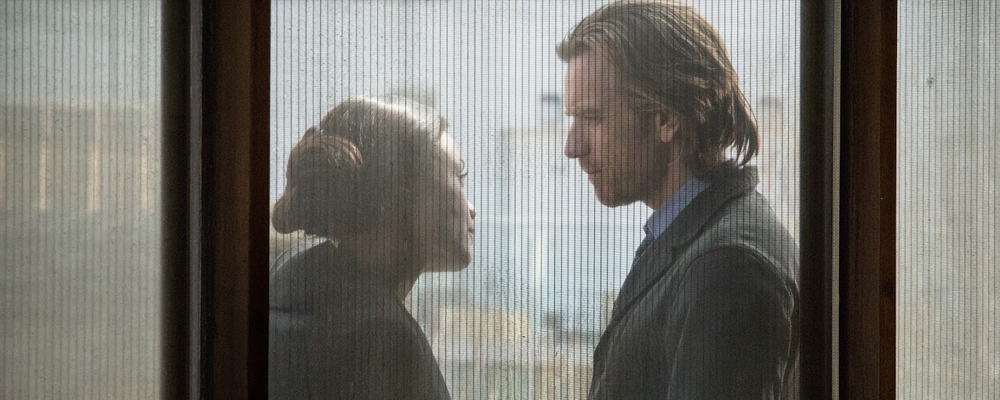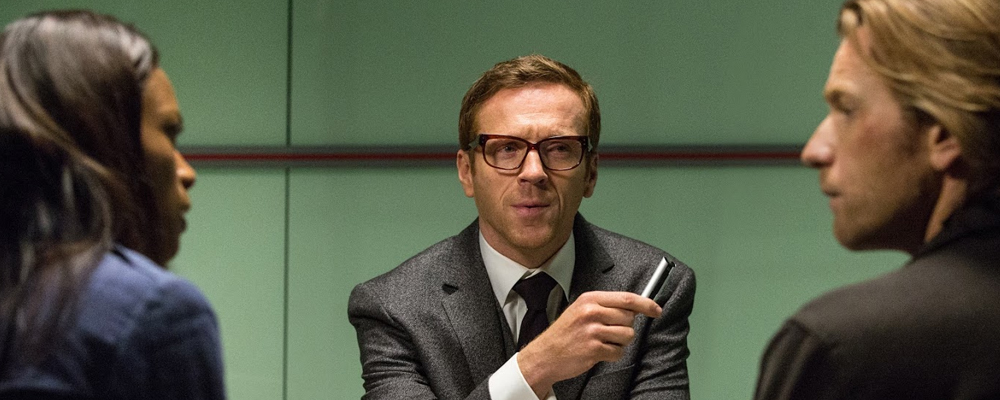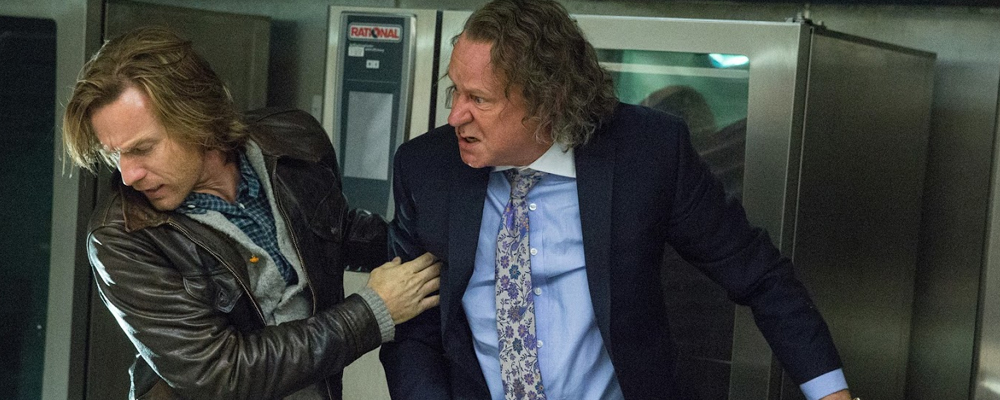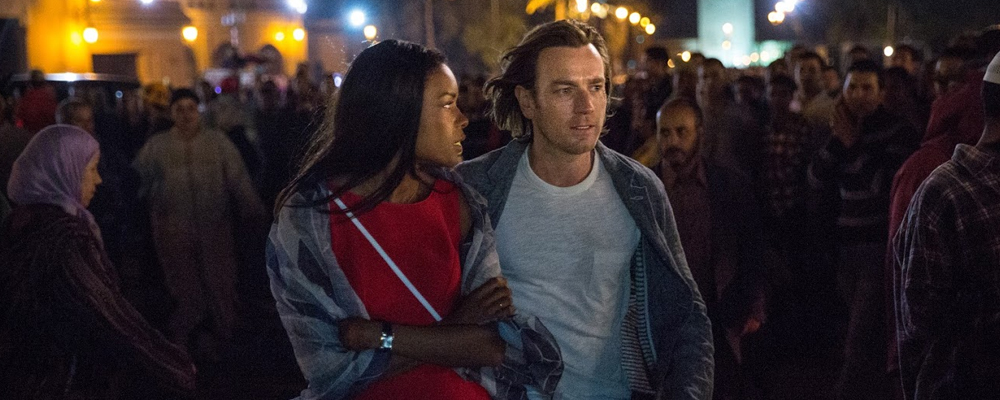‘Our Kind of Traitor’ Director Susanna White Discusses the Appeal of Spy Thrillers and the Importance of Diversity
Allyson Gronowitz
Susanna White has a BAFTA and two Emmy nominations to her name, but “Our Kind of Traitor” is only the British director’s second feature film. The visual splendor and dramatic tone in this latest John le Carré adaptation are very different from White’s first film, the kid-friendly “Nanny McPhee Returns.” In “Our Kind of Traitor,” Ewan McGregor stars as Perry Makepeace, an unassuming poetry professor drawn into the world of espionage along with his high-powered lawyer wife Gail (Naomie Harris) when Perry befriends a charismatic Russian mafioso (Stellan Skarsgård).
White has directed an episode of the critically-acclaimed television series “Boardwalk Empire,” “Masters of Sex” and “Billions” (starring Damian Lewis, who portrays an MI6 agent in “Our Kind of Traitor”), and she helmed the entirety of well-regarded BBC dramas “Jane Eyre,” “Bleak House” and “Parade’s End.” White has also been involved with initiatives to increase the diversity of film directors as part of the UK group, Directors UK. In anticipation of the release of “Our Kind of Traitor,” White opened up to Entertainment Voice about making the jump from television to feature films, being a woman director and how “Our Kind of Traitor” feeds into a very contemporary paranoia.
You’ve made a home in the television world with shows and mini-series like “Parade’s End” and “Jane Eyre.” What was it like directing a big-screen film?
It’s different. [For movies], you get more time, you get more authorship. You get incredible people to work with. On this movie, I got to work with DP Anthony Dod Mantle, with the incredibly exciting Sarah Greenwood designing the set. Also, the cast . . . but it’s not as true as it used to be that you get a better cast for movies because as we’ve seen, a lot of great actors have been working in the TV arena. It’s hard to generalize in that if you’ve got authorship for a series like I had on “Jane Eyre” or “Parade’s End,” which I did with Tom Stoppard and where I directed the entire series, you have a lot of control as a television director. Even there I was able to get incredible casts like Benedict Cumberbatch and Rebecca Hall on “Parade’s End.” [With] television, it’s a bit different because you parachute in [for an episode or two] and you don’t get much editing time. [With movies,] I felt there was time for attention to detail that you don’t entirely get in television.
The film had a very distinct look donning the golden-hued lighting. How closely did you work with cinematographer Anthony Dod Mantle to enact this vision?
We worked very, very closely together. The big thing I loved about this movie was that for a John le Carré story, it’s very contemporary. It’s a very modern story of a marriage and of a man who’s trying to work things out. Ewan [McGregor’s character, Perry] is a lost soul at the beginning of the movie. As much as he’d like to support his lawyer wife, he’s feeling a bit emasculated by her success. And it [depicts] a very modern Russia – it’s not the Cold War Russia that we might have thought of from something like “The Spy Who Came in From the Cold.” I wanted this film to have a very contemporary [feel], and I talked to Anthony about that. I wanted there to be a visual energy to it.
We liked this golden look for the oligarchs – it was a bit baroque. And that moved into another space when they get to that cabin in the Alps. I remember the first meeting I had with Anthony. I met him in a pub in Notting Hill and it was like 10 o’clock at night and he had just come off shooting for Ron Howard at the end of a long day. And I carried to this pub at Notting Hill a [film] of [Andrei] Tarkovsky because I wanted for that section of the movie to reference those Russian pastoral films and a different set of golden tones. Yet [Dima’s family and] Gail and Perry find happiness [at that cottage] when everybody has the least in material terms – after they escape from that world of excess and everybody’s got time for [one another] – even though there’s a ticking clock and events are closing in on them.
Anthony and I planned a lot together but at the same time, the great thing about Anthony is that he has such energy as a DP. Anthony brings a whole box of tricks. We talked about the presence of cameras everywhere in the world now, spying on us. And he would set up little indie cams, so you’d see the point of view of a surveillance camera quite often. [For example,] there’s the camera we put among the Champagne glasses at the football match; and in a more subtle way, through a two-way mirror at the interrogation scene at Heathrow Airport. A lot of that was his idea. Sometimes I wouldn’t even know he’d done it, but I would discover things on the dailies that I didn’t even know he was shooting!
What appeals to you about the spy genre and with John le Carré’s stories in particular?
I’ve always loved John le Carré, going back to “The Spy Who Came in from the Cold” with Richard Burton. I absolutely love “The Constant Gardener.” That’s a film with extraordinary performances and a terrific emotional story. And I grew up on the television version of “Tinker Tailor Soldier Spy,” so I really came into [the film] with an affection for le Carré. It’s challenging. I’ve worked in a lot of genres and it was a challenge to work in the thriller genre.
What is your experience as a women director in the industry? Is it different in the world of television versus the world of film?
I’ve been very fortunate in that I’ve worked pretty solidly in television and film for quite a while. I think my career reflects the careers of many women in that it took me quite a while to get a break in feature films despite having won a BAFTA and [earning] multiple Emmy nominations. It did take me a long time to get my first feature in the form of “Nanny McPhee Returns” and when I did get it, I’d come straight off [HBO miniseries] “Generation Kill.” I had a tremendous time making “Nanny McPhee Returns,” and I worked with incredible [talent] from Emma Thompson to Maggie Smith to Ralph Fiennes to Maggie Gyllenhaal. It was a big-budget film with CGI but [this path is] typical of the careers of a lot of women – in fact, there’s another British director at the moment who is a contemporary of mine; Philippa Lowthorpe, who has done incredible work in television, but she’s only just making her first movie this year and it’s a children’s film, “Swallows and Amazons.” I’m sure it’ll be completely wonderful but it’s surprising given her body of work. For me, what’s truly exciting about “Our Kind of Traitor” is that I get the chance to make an espionage thriller. Something crazy like three percent of those is directed by women. However, I’ve never experienced sexism on set – the crews have always been tremendously supportive of me.
Statistically speaking, for television – certainly in the UK, I’m not sure what the statistics are here— only about 13 percent of the directors are women. I’ve been working with Directors UK, which is the equivalent of the DGA (Directors Guild of America) in the UK. We commissioned a big study looking at employment for women in feature films, and we just had a big success within the last six weeks. We found that only 11 percent of feature films in the UK were being directed by women, so we set a target for ‘20 that publicly funded films should aim to have 50 percent [of films] directed by women. And the British Film Institute agreed at Cannes that they would set for themselves that target, which has been successful [elsewhere]. They set that goal in Sweden, to [get up to 50 percent] within five years and I think they achieved it within three years. Also, we want it to be that one of the ways you get points in tax credits is to have diversity [on a film set]. I’m actually very optimistic! I think things are shifting and I think that there’s a real willingness to have more female storytellers.
There was a brief scene in “Our Kind of Traitor” when Dima’s wife Tamara takes off her high-heeled shoes when running away. Have you noticed that little details like this make the difference in creating realistic portraits of women? And does it make a difference with a woman behind the camera?
Hopefully, there’s quite a lot of that! There are a few things in the movie, for instance, each time we had a boardroom table and I was asked about the extras, I said, ‘Let’s make sure there are plenty of women around this boardroom table!’ In the book, Dima’s wife Tamara is literally silent – she doesn’t speak throughout the entire book. It was very important to me that that marriage felt real. Stellan [Skarsgård, who plays Dima] and Saskia [Reeves, who plays Tamara] and I worked a lot on the backstory to make the relationship feel very real. Similarly for Naomie Harris’ character Gail, I wanted to make sure that her dialogue [made sense] for a really smart lawyer. And in a bigger way, although there is violence against women in the movie, I hope it makes you think about not celebrating violence but about the consequences. Hopefully, I brought emotional layers to the movie that go beyond just a straight thriller.
“Our Kind of Traitor” opens nationwide July 1.




